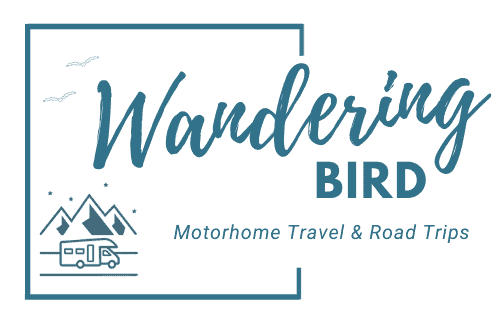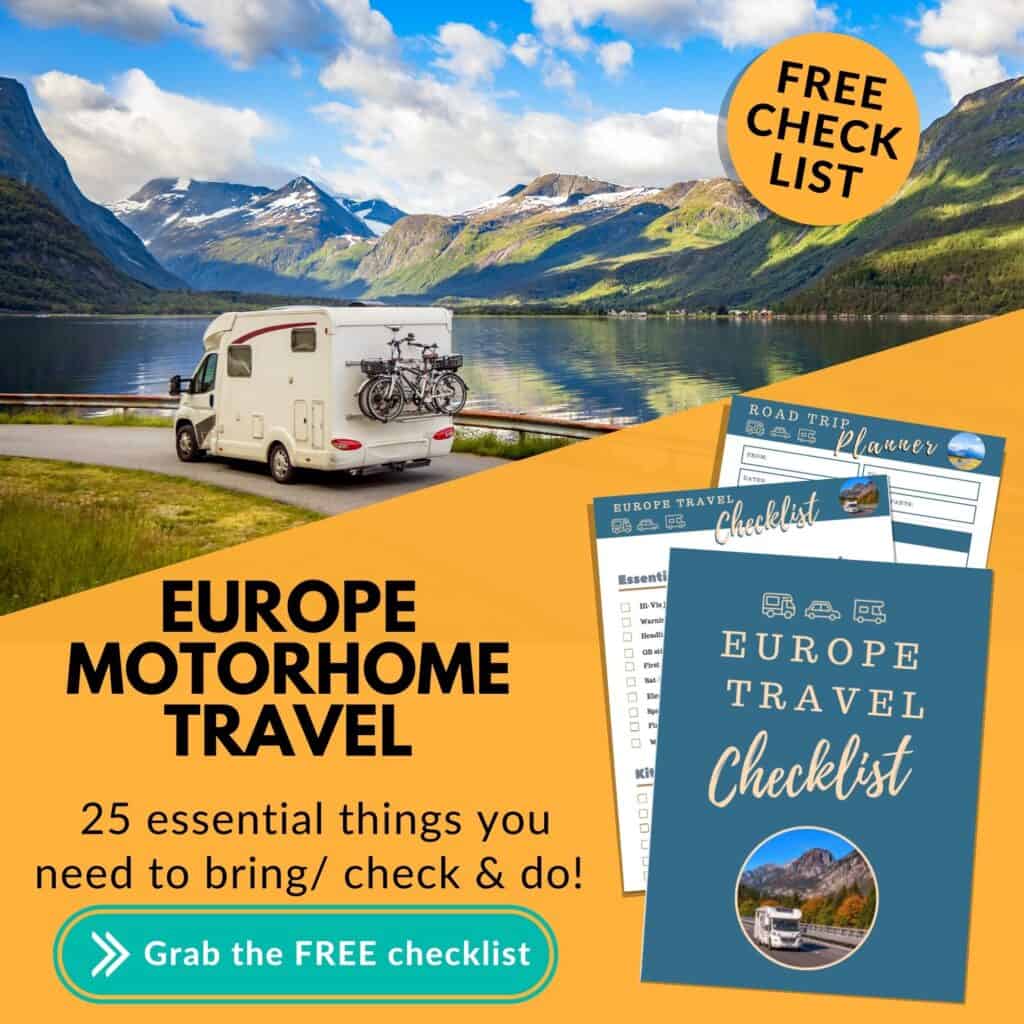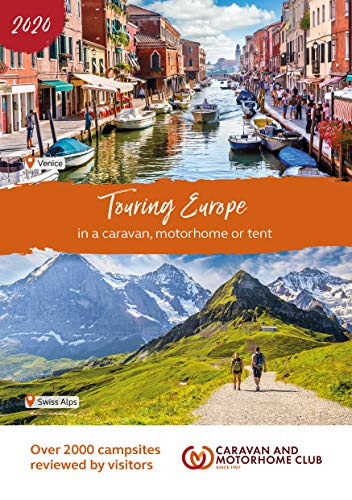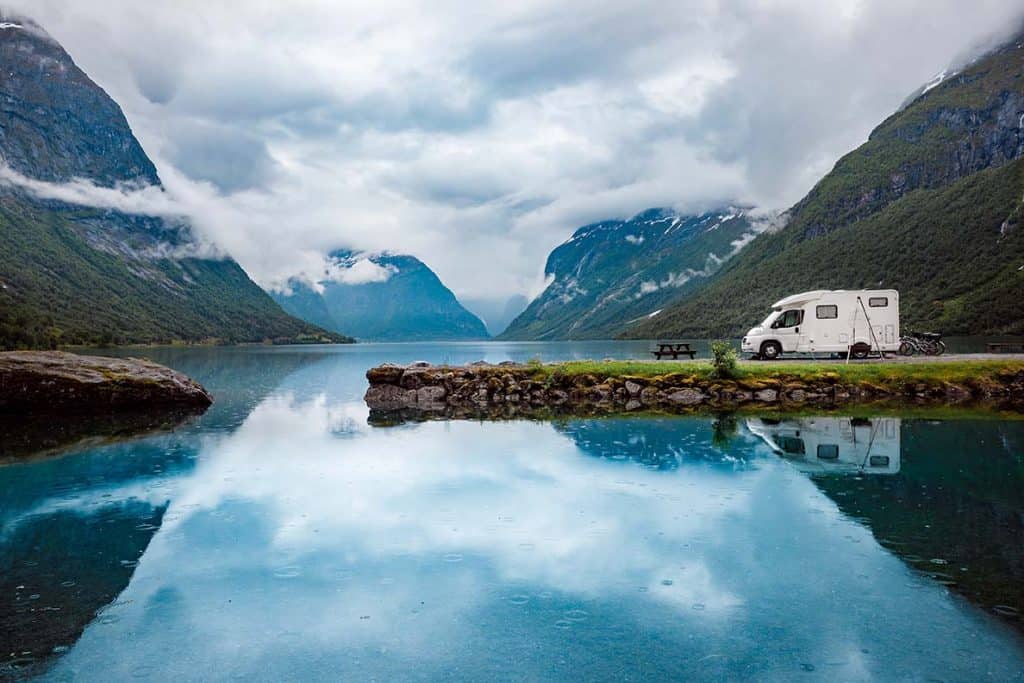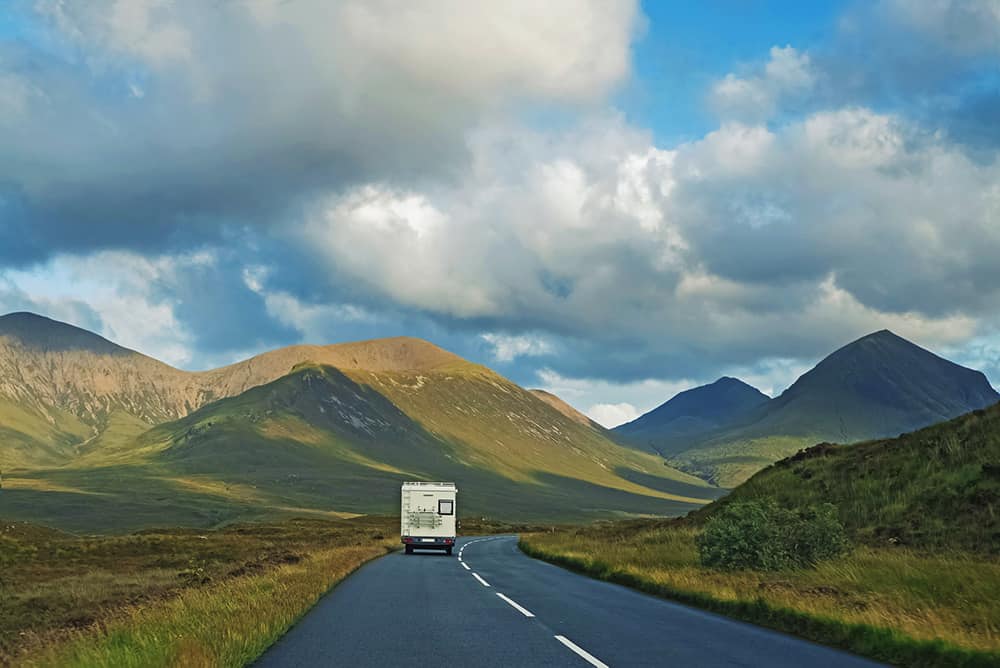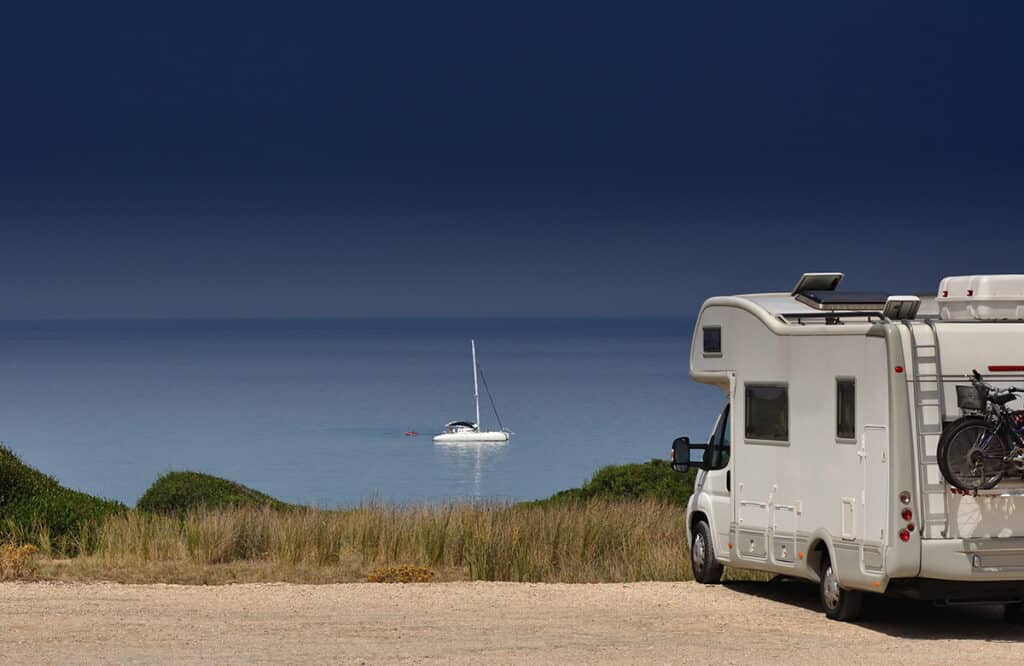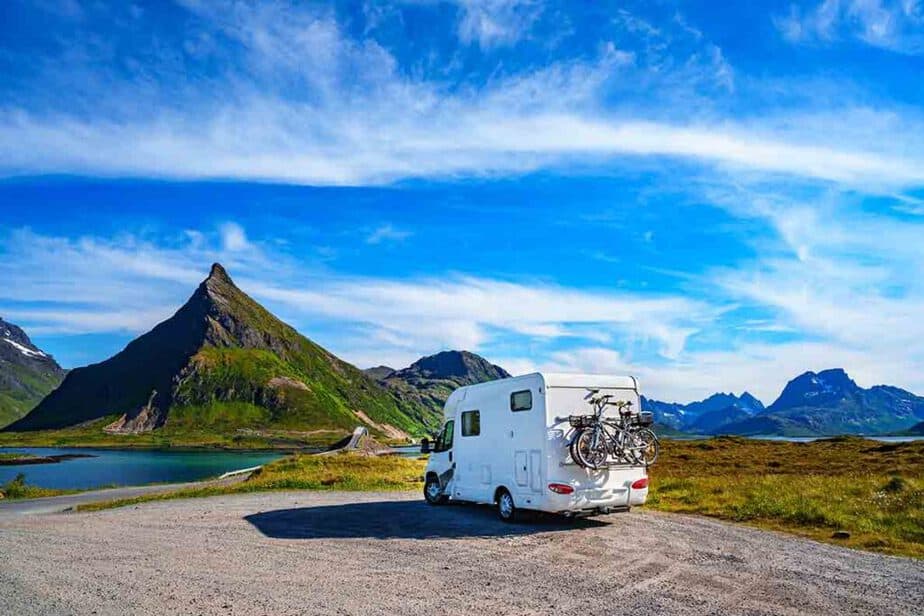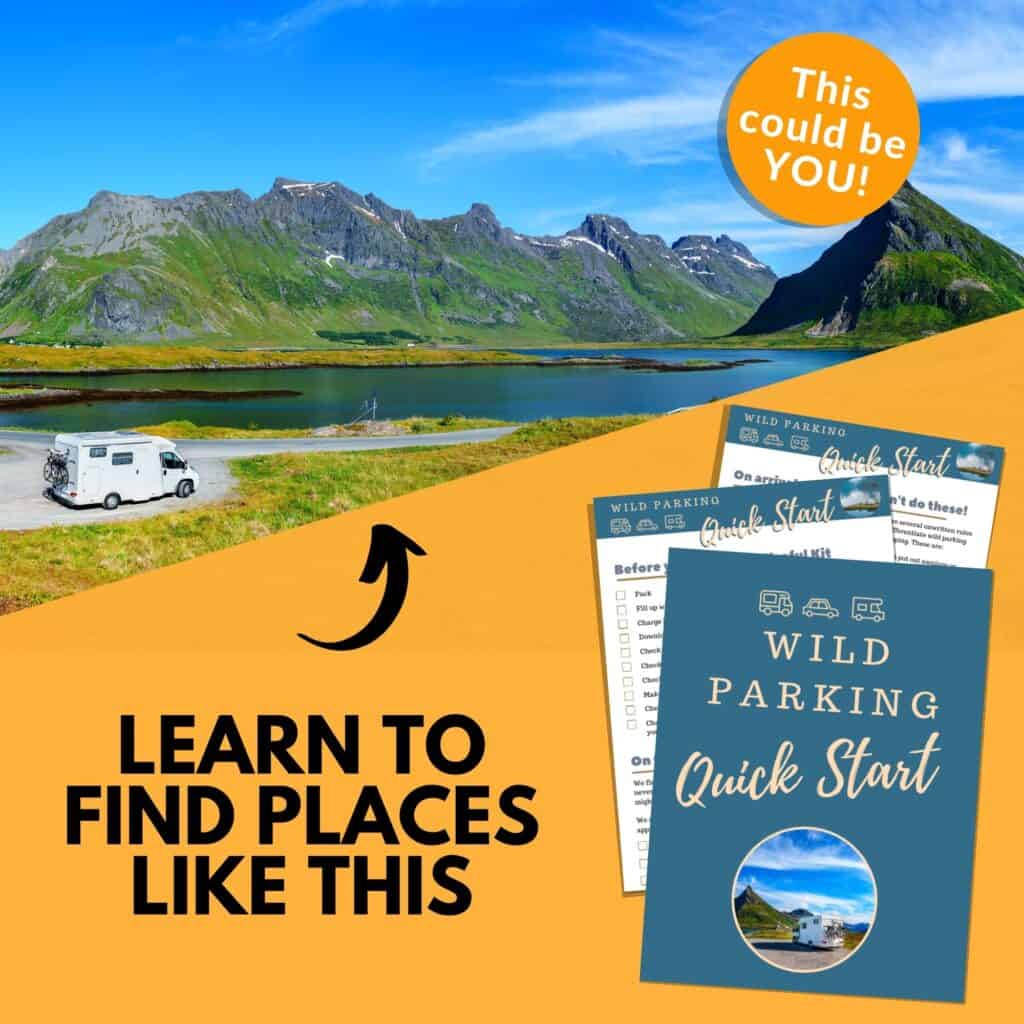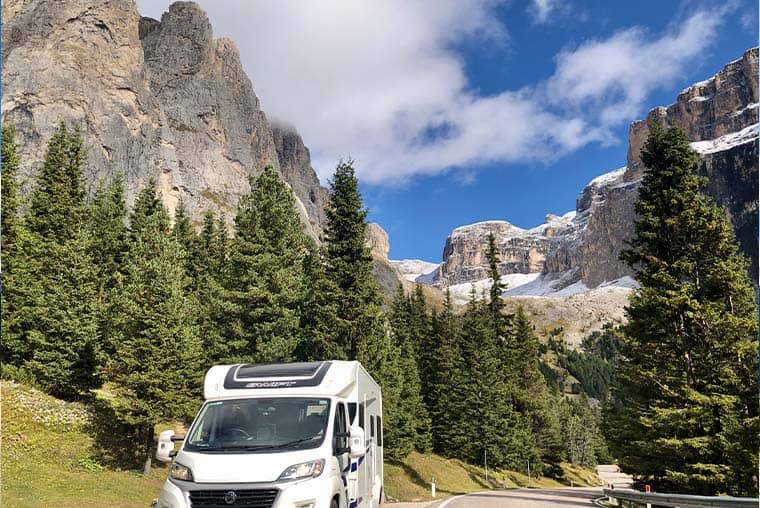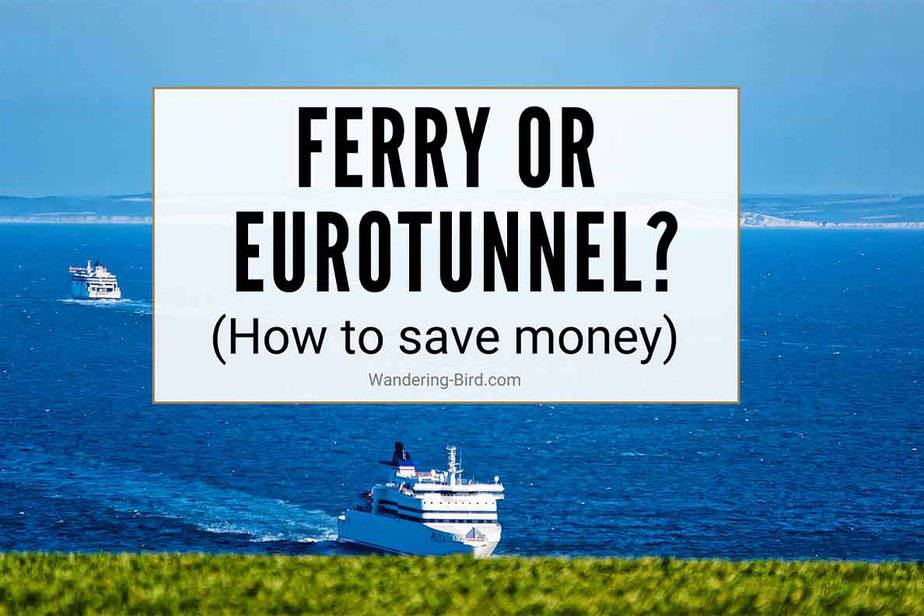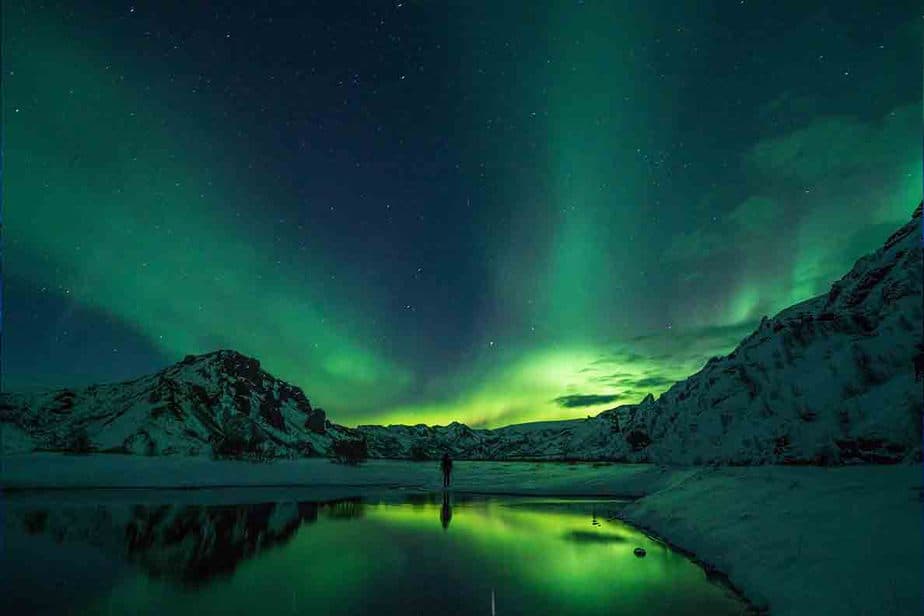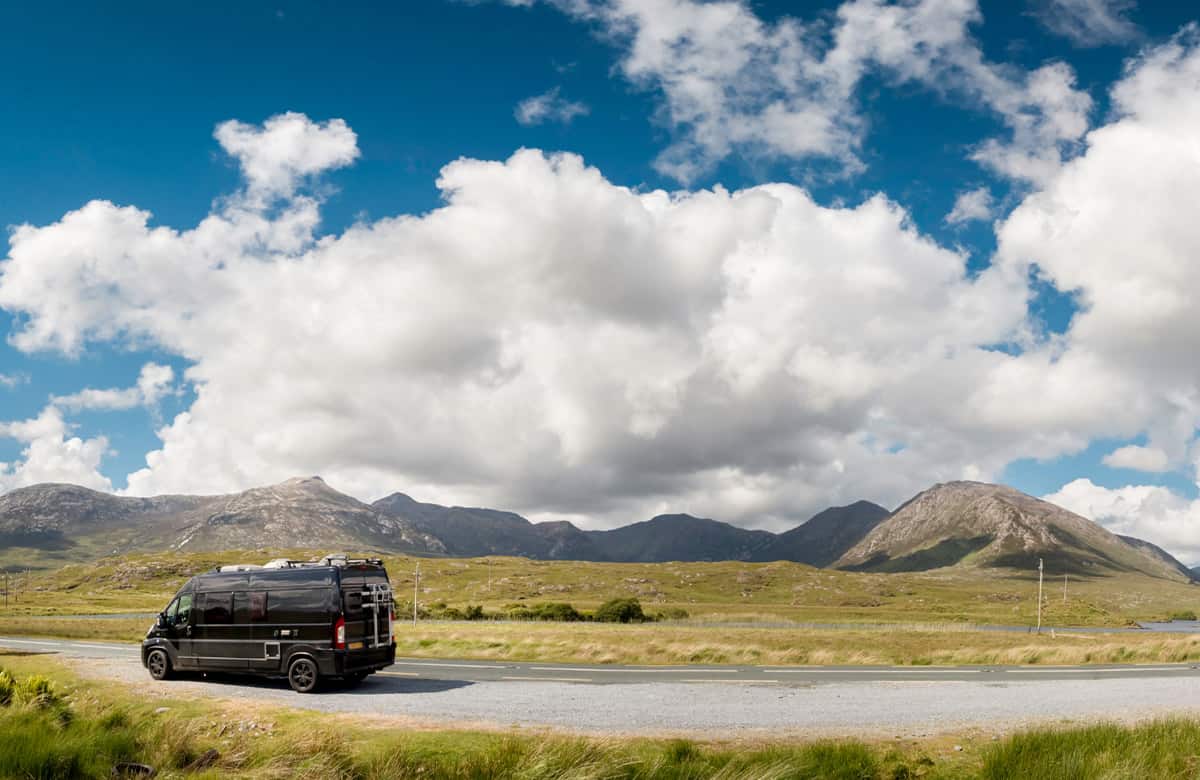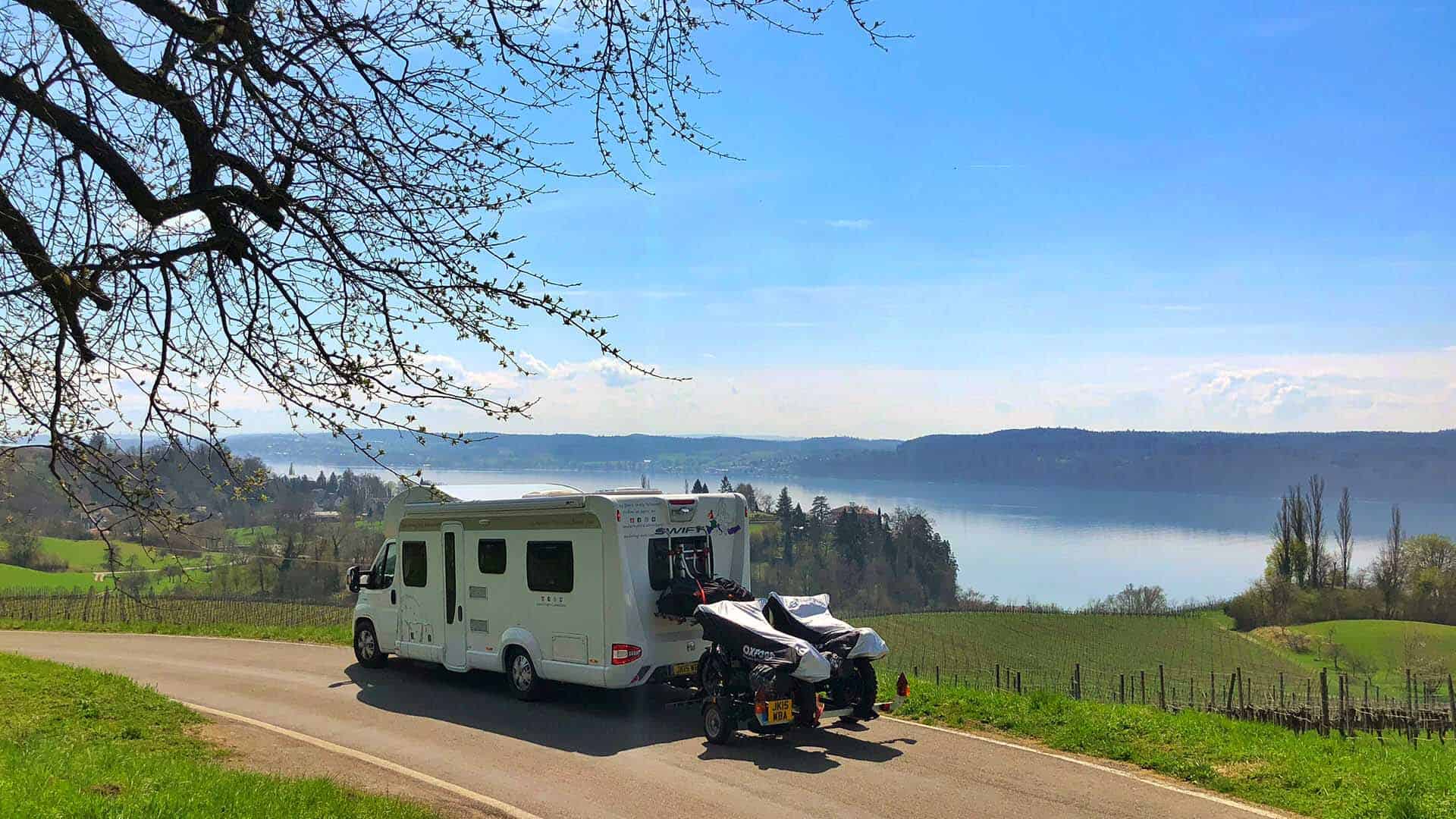Motorhoming and Campervanning in Switzerland- The Ultimate Guide
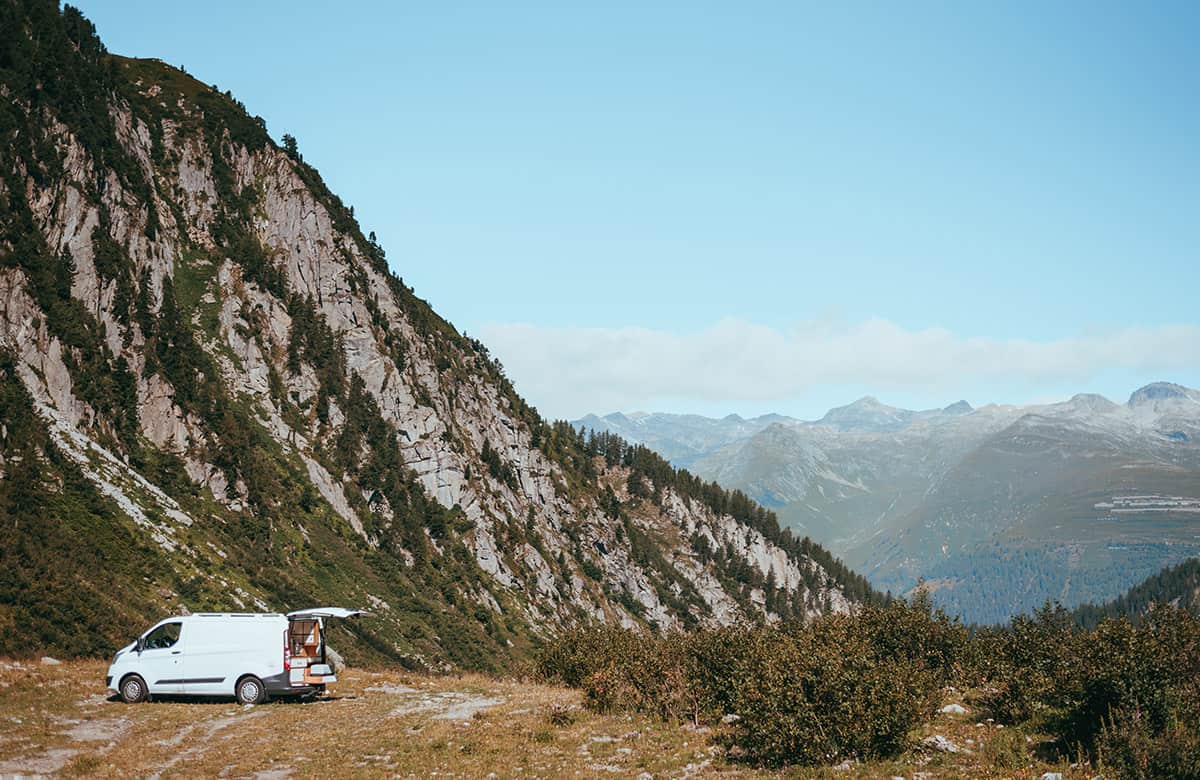
Planning a motorhome or campervan trip to Switzerland? Want to see some of the most beautiful places in Europe (Switzerland has some INCREDIBLE places to visit)? Here’s everything you need to know to go motorhoming or campervanning in Switzerland.
Don’t forget to download your FREE Europe motorhome travel checklist below to help you plan your Swiss road trip.
*We work hard to make this the best motorhome travel blog and road trip website possible, full of helpful content for you. The website is supported by our readers, so if you buy through links on this site we may earn a commission- at no extra cost to you. All opinions remain our own.
If you find this post useful, you can also treat us to a coffee – we promise to enjoy it while creating more useful content like this- we might even indulge in a biscuit (or two!)
JUMP AHEAD TO...
Campervanning in Switzerland – why you should go!
When you think of Switzerland, what comes to mind? Mountains? Lakes? Chocolate? Switzerland is all that- and so much more. The nature, the wildlife and the friendliness of the people are all wonderful reasons to visit.
You can explore Switzerland using public transport, but it’s so much better if you have your own vehicle- whether that’s a motorhome or campervan (our preferred options), or a car, caravan or even motorbike.
One of the best things about being able to explore Switzerland on a motorhoming holiday is that you can see the differences between the regions and really get a feel for the country in a short space of time. It can also make your trip cheaper if you can buy and prepare your meals instead of having to buy them all (Switzerland is not particularly cheap- although not as expensive as Norway!)
In this guide, we’re going to share with you everything you need to know to go motorhoming or campervanning in Switzerland, including getting to Switzerland from the UK or abroad and planning your route, where to stay (motorhome campsites, aires or wild camping with your camper), some road trip ideas and places to visit, driving tips and other practical advice to help you have an amazing Swiss road trip.
If this is your first campervanning trip to Switzerland (or Europe!), don’t forget to grab your free motorhome travel checklist which will help you plan and organise everything you need.
Planning to take your motorhome to Europe?
GUIDE: Stop the overwhelm with our step-by-step guide. Contains eBook, checklists and more. Complete Europe Motorhome Travel Toolkit
CHECKLIST: Don’t forget to grab your FREE Europe motorhome travel checklist HERE
GEAR– If you need any motorhome gear for touring Europe, here’s what we recommend.
Motorhoming in Switzerland- Where to go
When planning a motorhome trip to Switzerland, the first thing you need to do is decide where you’re going (and how long you want to go for!)
How long to go for?
If you’re driving from the UK to Switzerland (we’ll cover that shortly), you need to allow at least a day to get from arriving in France (by either ferry or Eurotunnel) to the Swiss border. And that’s a long day of solid driving (it’s about 7 and a quarter hours (685km) from Calais to Basel, on the north-west border of Switzerland with France.
You can easily visit and explore Switzerland for just a few days or a week and it’s quite easy to drive around. Of course, if you have 10-14 days, you can see a lot more of the country.
How long does it take to drive across Switzerland?
Switzerland isn’t a huge country and you can drive across it quite quickly if you use the main roads.
As a guide, if you wanted to drive from Basel to Como (on the Italian border near Milan), it will take about 4 hours (300km)
If you want to drive across Switzerland from West to East, Geneva (on the western border with France) to St Moritz (in the East) will take about 5 and a half hours (480km)
However, much of the country is made up of the Alps (BIG mountains), so driving those take a lot longer as the roads are full of hairpin bends and steep inclines! Don’t underestimate how long a journey will take you, especially if you’re in a larger vehicle like a motorhome or campervan.
TOP TIP: If you want to drive into northern Italy and the Dolomites, you might find it faster to go through France and then through Italy, rather than negotiating the Swiss Mountains. Get more Italy road trip tips.
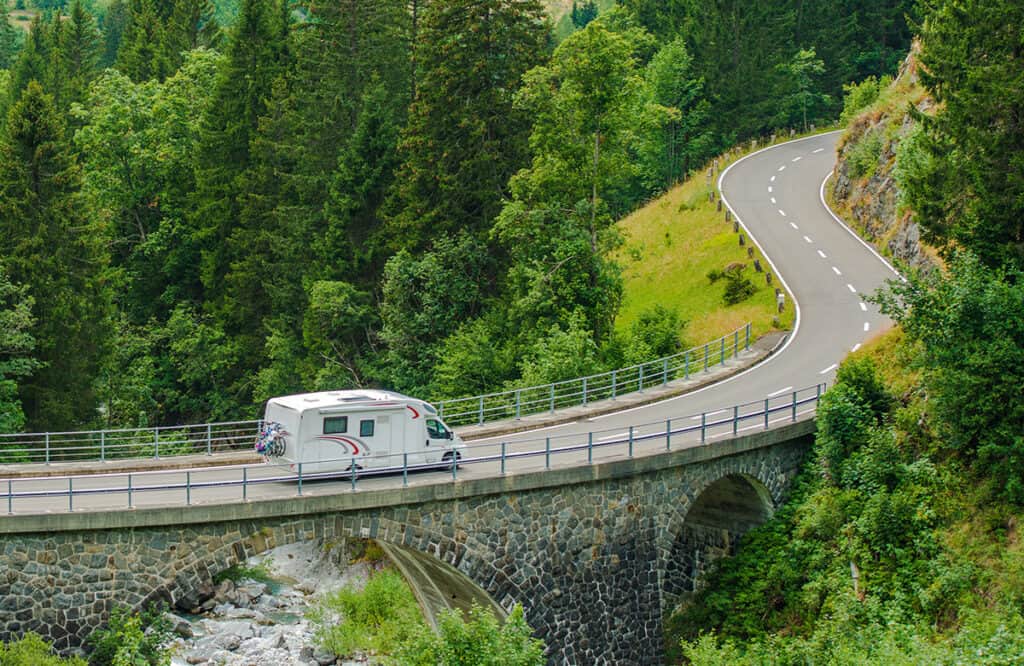
Highlights of a Swiss campervanning holiday
Some of our favourite places to visit in Switzerland include:
- Standing in the middle of the Rhine Falls– one of Europe’s biggest waterfalls.
- Driving in the Swiss Alps. They are breathtaking (scary, but breathtaking!)
- Going up the Gelmerbahn Funicular and visiting Gelmersee Lake
- Visiting Jungfrau and the train to the Glacier
- Titlis- with the world’s first cable car
- Beautiful Chillon Castle- right on the shores of Lake Geneva
- Winter sports. The slopes in Switzerland are world-class
If you enjoy reading books before a trip, here are some we recommend:
See more fun and practical motorhoming books we recommend reading
Best time to go campervanning in Switzerland
Switzerland is worth visiting at any time of the year, but for different reasons.
If you want to be able to drive freely and have all attractions open, go between April and October. Summer is very busy in the cities and major attractions, but the mountains are fairly empty.
Spring in Switzerland
Spring is lovely- as long as it’s after April. Although technically Spring starts on 21 February, the snows don’t fade until around the end of March, so April, May and June are a great time to visit. Avoid the Easter holidays if you can- prices get hiked up then.
But the flowers are beautiful- be sure to check out the Morges Tulip Festival at Lake Geneva in April. You can also visit Gruyeres on the first Sunday of May for the annual Cheese Festival- expect to try lots of yummy samples.
Summer road trips in Switzerland
Summer is perfect. Highs hit mid-20s, although it can always feel cool up in the mountains, but the skies are often clear and you can see the Milky Way at night. Of course, these means more people and more traffic, so if you are driving any of the crazy mountain passes, be sure to do it as early as possible to avoid oncoming tour buses!
A great day to be in Switzerland is Swiss National Day on 01 August. The entire country will celebrate with fireworks and parties – and they’re happy for tourists to join in.
Autumn in Switzerland
Autumn is actually my favourite time to go campervanning in Switzerland. The days are still long and mostly warm, the leaves look amazing as they change colours, and the crowds from summer have gone.
TOP TIP: If you are travelling outside of peak season, definitely get an ACSI CampingCard– you’ll save a fortune on campsites all over Europe, including Switzerland
The weather can be chilly at end of October into November and many places close at end of October, so do your research if there’s something specific you want to do or see. If you enjoy wine, don’t miss the Basel Wine Fair which happens at the end of October each year.
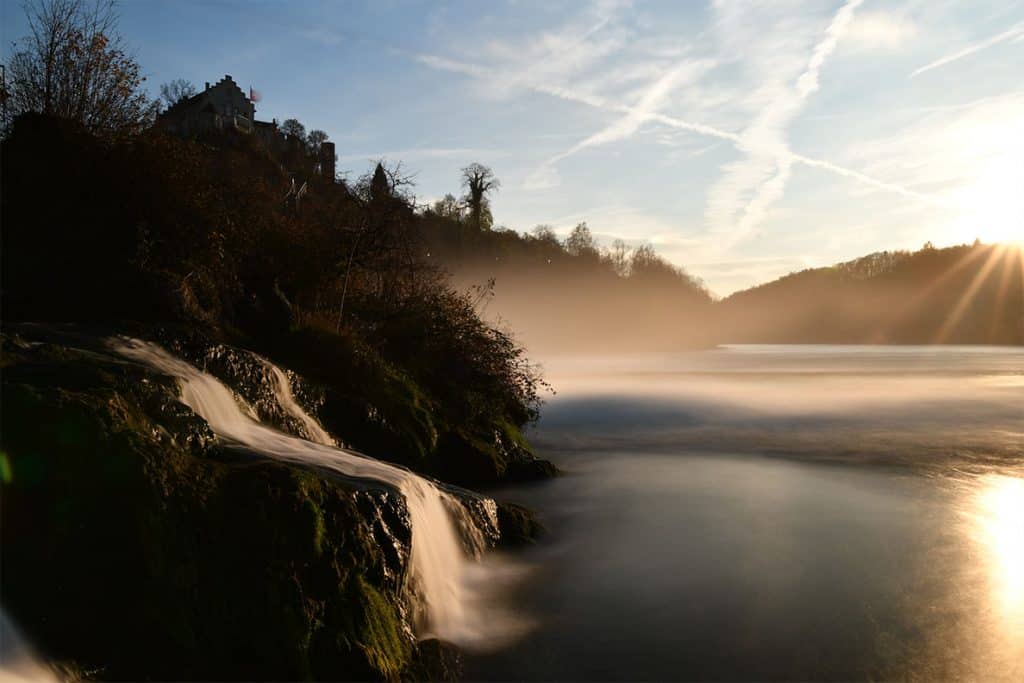
Winter campervanning in Switzerland
I’ll be honest, winter in Switzerland starts around the end of November and runs until April. It gets COLD, there will be lots of snow and you’ll need to prepare your van and yourself with appropriate gear. Make sure your campervan heating is working ok.
The days are also shorter, so you’ll have less time to explore.
Some of the panoramic mountain trains, like the Gotthard Panorama and the Glacier Express shut over the winter months and many mountain roads are closed due to heavy snow. Many of the funiculars and even some cable cars close during the winter too- due to adverse weather.
However, if you want to go motorhome or camper skiing, this is a great time to bring your van to the slopes! The best snow is usually from the end of December until March, but nature does love to be unpredictable! Skiing and winter sports are a BIG DEAL in Switzerland, so expect aires to be busy and campsites to be booked up well in advance. Also, try to visit during some of the world cup ski races- the atmosphere is amazing!
Don’t miss out on visiting some of the Christmas markets- Switzerland has some of the best Christmas markets in Europe. It’s also a great place to celebrate New Year, as some of the cantons in Switzerland celebrates it twice- once on 31st Dec/ 01 Jan, and then again on 13th Jan in accordance with the Gregorian Calendar! (This is called Silvesterchlausen)
New to motorhome or camper travel in Europe? You might find these posts helpful:
See all our Europe motorhoming posts here
NEED GEAR? If you need any kit or essentials for motorhoming in Europe, here’s what we recommend and where to find it
Planning a driving route from the UK to Switzerland
There are a couple of routes for you to get from the UK to Switzerland.
The most obvious is the Eurotunnel, which is generally cheaper and faster than a ferry (read more about the pros and cons of the Eurotunnel for motorhome trips here). If you use the ‘Chunnel’, you’ll end up in Calais.
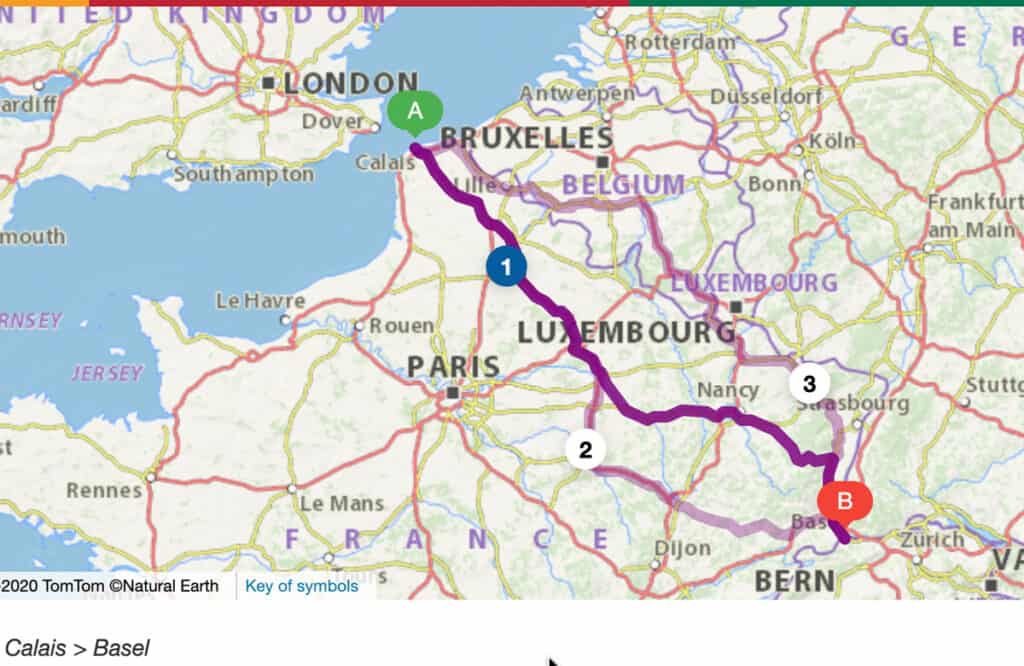
The quickest route from Calais to Basel (closest major point in Switzerland) is to the NE of Paris, via the A26 and then the N4. This route is around 685km, should take around 7h 25m and will cost about 33€ in tolls for a small camper or a car. A motorhome will cost more.
Route 2 is via A26, then N5 and is 725km long. This will cost a car or small camper around 48€ and is estimated to take 7h 39m
Route 3 is via Belgium on the E411 and then the A4. It’s longer, at 736km, will take 7h 42 but will only cost 9€ on the tolls. So it’s up to you which you choose.
You can learn more about Tolls in France and how to plan a route in our France route planner guide.
Some top tips for route planning:
- Avoid peak days and times on the Eurotunnel
- Try to avoid driving on the weekends or on bank holidays- LOTS of traffic
- Alternatively, get up early and do as much driving as possible before the traffic hits, then stop and have a nap somewhere safe- a huge advantage of having a motorhome or campervan with a bed with you!!
Can I drive to Switzerland in the Winter?
Yep. Generally the major routes are open all year, unless you happen to be really unlucky and hit it in the middle of a snowstorm (do check the weather forecast before travelling.)
If this happens, then we recommend stopping for the night somewhere safe (again- the beauty of travelling in a motorhome) and then continuing on when the roads have been cleared. Don’t forget you will need snow chains and make sure you have fitted all-weather tyres- more on that shortly.
Borders / Customs in Switzerland
Ok, let’s get the technical bit out of the way.
Switzerland is in Europe, but it is NOT in the EU. Therefore, there are border restrictions on what you can/ cannot take into the country (and out.) It also does NOT use the Euro- it uses Swiss Francs. (CHF)
Also, Switzerland IS in the Schengen Area, which means that if you are subject to a 90 day limit on your time in the Schengen Area (like UK passport holders are now after BREXIT), then your time in Switzerland DOES count towards those 90 days.
READ MORE: Driving in Europe after BREXIT- new rules to be aware of
Tobaccos and spirit limits
If you are entering Switzerland, this is what you can carry with you (for persons older than 17 years)
- 250 units/g cigarettes / cigars / other tobacco products
- 5 litres of alcohol (up to 18% vol.) and 1 litre of alcohol (over 18% vol.)
Border Crossings into Switzerland by road
There are many places where you can drive across the border into Switzerland. Some have a proper, official border where you will be stopped and asked to show your passport and other documentation. Other crossings are literally marked with a flag which you look at as you drive past. There are no guards, no customs control and no barrier.
Don’t forget you will need a vignette (more on that later), so you might need to stop at/ near the border to get one.
Bring a dog/ pet into Switzerland
You can bring your dog into Switzerland. They will need:
- Microchip
- Proof of rabies vaccination (now done as an Animal Health Certificate if you live in the UK).
READ MORE: New rules for taking your dog into Europe after BREXIT
Hiring a motorhome or campervan to tour Switzerland
If you don’t have your own vehicle, or don’t want to drive to Switzerland, you can easily fly in and hire one. Just make sure to ask how to get from the airport to the rental agency- not all of them are at the airport itself and you might need to book a taxi.
To rent a vehicle in Switzerland you must:
- be at least 20 years old, (certain car categories may require older)
- have had a driving licence for more than one year
- show identification (identity card for EU citizens or a valid passport for other nationalities)
Make sure you have proof that you can take the vehicle across a border into another country if that’s what you’re planning to do. Also, be warned- although most countries in Western Europe are generally fine, many hire companies ban travel into Eastern Europe with their vehicles- which includes Slovenia and Croatia. So check before you book.
You can expect to pay around £60/ day for a campervan in June out of peak season- be sure to ask the right questions so you know what to expect from your motorhome or campervan rental
Don’t forget, it is YOUR responsibility to make sure the vehicle has the required safety equipment. The on-the-spot fines apply to you as the driver, not the company. Check in advance with the company what kit they will provide with the vehicle and what you will need to bring.
Take a list of what is legally required with you and check it off one by one as you are given the handover. Do not drive until you are happy you comply with the local laws.
Want to rent a vehicle for your road trip?
These might help:
READ: 10 essential questions to ask before you rent a motorhome
Motorhome rules in Switzerland- what gear do you need to carry?
Just like motorhoming in France, there are certain things you MUST carry with you in your motorhome or campervan whilst touring in Switzerland.
Don’t forget, if you are driving through France or another country to get to Switzerland, you need all the kit required by that countries, as well as the kit needed in Switzerland.
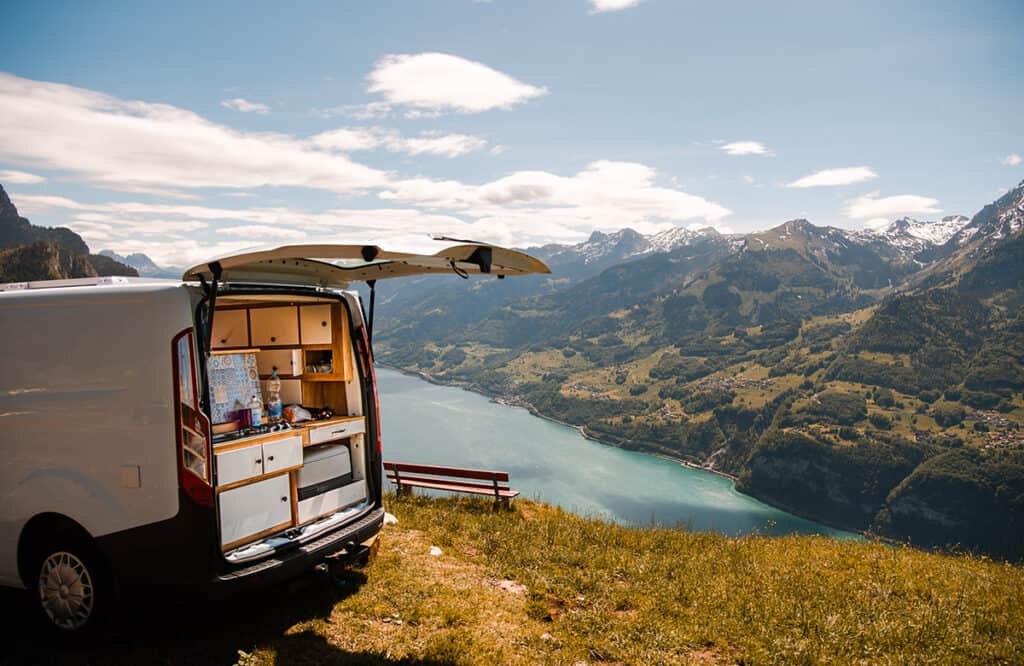
Things you need to drive in Switzerland- safety gear
These are the things you MUST have with you when you’re motorhome or campervan touring in Switzerland.
- Warning triangle
- Headlight beam converters– if you have a UK vehicle. These must be fitted before you drive in Europe. (If you have a vehicle which allows you to adjust the beam automatically for European driving, you won’t need these.)
- UK sticker attached to the back of vehicle or reg plates (and trailer if you have one)
- A vignette (see the Vignette section for more details)
- A spare wheel (and tools to change it!), or a tyre repair kit.
- If you wear glasses you MUST carry a spare pair
- Crash helmets are mandatory for motorbike/ moped riders and passengers
- If you are driving in winter, you WILL need snow chains (make sure they fit your vehicle) and winter/ all-season tyres should be fitted. ‘Ketten obligatorisch’ means Chains obligatory- you should stop and attach your snow chains.
NOTE: Hi-vis reflective jackets are NOT legally required in Switzerland but they are in both France and Germany, so you’ll need them if you go there.
TOP TIP: Buy these essentials for driving in Switzerland in advance. If you wait until you’re at the ferry/ tunnel, you could spend THREE times as much! See the latest deals and best prices on essential gear here
What documents do you need to road trip in Switzerland?
If you’re driving in Switzerland, you need to carry the following documents:
- Passport (or identity card)
- Driving licence (check it is in date!)
- Motorhome Insurance documents- check you are covered for driving in Europe
- Breakdown cover
- Vehicle V5 logbook (which must show your correct address)
- Vehicle must be legally taxed and MOT’d
- Trailer certification
- Green card (get from your vehicle insurer)
- International Driving Permit if required
- Personal travel insurance
Do I need an international driving permit to drive in Switzerland?
Most UK citizens do not need an IDP to drive in Switzerland, as long as you have a card driving licence issued in the UK (in date, of course!)
You might need one if you have:
- a paper driving licence only
- a licence issued in Gibraltar, Guernsey, Jersey or the Isle of Man
(If you do need an IDP, here’s an in-depth guide on how to get an International Driving Permit and which one(s) you need from a UK post office.
Planning to take your motorhome to Europe?
GUIDE: Stop the overwhelm with our step-by-step guide. Contains eBook, checklists and more. Complete Europe Motorhome Travel Toolkit
CHECKLIST: Don’t forget to grab your FREE Europe motorhome travel checklist HERE
GEAR– If you need any motorhome gear for touring Europe, here’s what we recommend.
Vignettes in Switzerland
Most countries in Europe have some sort of charge for using their motorways/ major roads. They either use tolls, like France, or they use a vignette, like Switzerland. (Unless you’re used to motorhoming in Holland, where they don’t have anything!)
A vignette is literally a sticker which you must buy from an approved location and stick on your windscreen (in a specific place so the cameras can see it). Once it’s in place, you can then drive on any of the motorways or major roads (Classes 1 and 2) without worry- there are no tolls to pay.
Now, some people make the process of getting a Swiss vignette sound horrendously difficult. It’s really not, especially if your motorhome or campervan is under 3.5 tonnes. You can even order it online in advance and get it sent to your home before you leave from the website here.
How much does a Swiss Vignette cost?
A vignette currently costs 38.50€ per vehicle. However, if you are towing a caravan OR a trailer (and the total train weight is less than 3.5t), you will need to purchase a second vignette. Also if, like us, you tow a motorbike or a second vehicle, you will need to buy another vignette for that too.
So we, with a motorhome, a trailer and TWO motorbikes, would have needed to buy 4 vignettes if we wanted to ride the bikes in Switzerland. Although, in reality, we only needed to buy two (for our bikes) because our train weight with the motorhome and trailer was greater than 3.5t, so we needed the next level up.
Affixing the vignette to a trailer or bike isn’t as easy as on a car- it must be fixed “on an easily accessible part which cannot be dismantled and replaced.”
How long is a vignette in Switzerland valid for?
A vignette is valid up until the end of January the year after you bought it. (So the 2021 sticker is valid until 31 January 2022.)
And yes, you still need to buy one even if you’re only visiting Switzerland for one day, or even one hour, out of the year, assuming you want to use the motorways.
NOTE: the Vignette is invalid if you remove it. So be sure you won’t be returning within the time limit before you take it off.
Do you HAVE to have a vignette in Switzerland?
If you want to use the motorway network, yes- it’s compulsory. However, you can choose to drive just on the backroads and never buy a vignette- as long as your vehicle/ train weight is less than 3.5t.
What does a vignette NOT cover you for?
You will still need to pay for using any car trains, some of the bigger tunnels and any car ferries. There are also a few private roads which you will need to pay for if you choose to use them, like the Oberaar panorama road at the Grimsel pass.
Vignettes for vehicles UNDER 3.5 tonnes
If you have a vehicle with a train weight of less than 3.5t, and you haven’t bought a vignette in advance, you can buy one from the border or just stop at the first garage/ service station after crossing the border. Simples.
Vignettes for vehicles OVER 3.5 tonnes – Via App
If you have a motorhome which weighs over 3.5t, OR the total weight of your motorhome and trailer exceeds 3.5t, you can’t buy the ‘normal’ vignette. You must pay the HVF (Heavy Vehicle Fee).
To do this, you need to download the VIA app (from your App store or Android store). This App is actually REALLY good. It allows you to select your vehicle type, enter details, select dates and pay- all from within the app. You get a scannable QR code for border crossings if needed to show proof of payment. Find out more about the App and watch a video here
NOTE: If you are over 3.5t, you need to pay to use any public roads in Switzerland, not just the motorways,
I believe the current payment amount is CHF 3.25 a day (about £2.60) and there’s a minimum fee of CHF 25.00.
Touring Switzerland in a campervan- Other useful things you might need
We’ve been touring Europe in our motorhome for several years. We’ve tried all sorts of kit- some useful, some not so much.
Here is a list of things we highly recommend when motorhoming in Switzerland, but which are NOT essential:
- Motorhome WiFi– learn our favourite way to get internet on the road
- Toll pass (see below)
- TV- If you’d like TV in your motorhome or camper, here’s how to get it.
- Motorhome sat-nav– get one you can enter your motorhome dimensions into, like these
- Motorhome security camera– this thing is GOLD for allowing us to go exploring and leave the van for a short time.
- Solar panel- perfect if you want to wild camp in Switzerland with your motorhome
- Inverter- a motorhome wild camping essential
- An awesome motorhoming logbook to record and remember your adventures!
Motorhome Stopovers and Overnight camper parking in Switzerland
Like most countries in Europe, there are several types of places where you can stop with your motorhome or campervan overnight in Switzerland.
- Campsites
- Aires
- Free/ approved motorhome parking schemes
- Wild Camping (we’ll talk more about the legality of that shortly)
Campsites in Switzerland for Motorhomes and Campervans
Campsites in Switzerland are much like other campsites anywhere around Europe. Some are very rustic, whereas others are incredibly well-equipped with pools, entertainment and more! They’re pretty easy to find, especially if you’re a member of ACSI or have a book!
You normally don’t need to book in advance unless you’re visiting in peak season, are going to a VERY popular one (like up Jungfrau) or are visiting a specific ski resort in winter. Also, if you’re a member of one of the UK’s biggest motorhome clubs, they have some sites in Switzerland which you can book through their systems.
Be aware that many campsites close at the end of the season, some as early as mid September and don’t re-open until Easter. So do your research, especially if you’re travelling out of season. There are some campsites here which are open all year.
TOP TIP: We’ve found campsites in Switzerland to be expensive, much more so than neighbouring France or Germany. If you can travel outside peak times, use your ACSI Camping Card to reduce the cost of campsite stays
Aires in Switzerland
An Aire is an approved motorhome and campervan overnight parking place. They are often paid, although you will find some in more remote areas which are free to use overnight. Many of them have motorhome service points- often for a small additional fee.
If you use an aire there will usually be a board with the rules displayed, such as how much it costs, how to pay and how long you can stay. Switzerland only has about 100 aires, so they’re not always easy to find.
READ MORE: Learn how we find and use aires and approved free overnight motorhome stopovers across Europe
You cannot book motorhome aires in advance- it’s first-come, first-served, so if you’re visiting at peak times you might feel happier booking a campsite so you’re assured of somewhere to stay.
A good tip is to try and arrive AT your destination just before lunchtime. Many people move on after. a lazy morning, and stop en-route, so you have the best chance of finding a spot around this time, but that’s when the day is at its hottest, so be careful.
There are very few motorhome facilities at an aire. You should be able to get water and empty waste, but don’t expect restaurants, pools or entertainment areas. Also, do not hang out the washing, get your awning out or put chairs out- this is camping and is not allowed- the police will stop and ask you to move.
It’s always worth investing in a motorhome book of aires, as well as an online app- just in case you find yourself without internet in your motorhome (or without a wifi signal). Of course, the downside with any book is that it goes out of date, but don’t worry if it’s only a year or two out- most information about aires won’t change too much. These also make great gifts for motorhomers.
Other Free Approved Motorhome and Campervan stopover schemes
Swiss Terrior is the Swiss equivalent of France Passion. It’s a scheme which connects vineyards, restaurants, farms and the occasional chocolate maker (yes, really!) with motorhomers and campervanners looking for safe places to stay overnight. If you’d like to avoid busy campsites and aires, but don’t want to risk wild camping, this might be the option for you.
The scheme is simple- you join up, and are given access to a collection of business who have agreed to provide overnight parking for motorhomes and campervans at their premises, in return for you spending money there, in the form of a meal, or buying some food (or chocolate!)
The one downside to the scheme (according to people who’ve used it more extensively than we have) is that most of the places are in the west of Switzerland and there are very few businesses who’ve opted in around the major tourist areas- the ones where the campsites are often fully booked (like Jungfrau).
Wild camping in Switzerland for motorhomes and campers
Ok, let’s talk about wild camping in Switzerland for motorhomes and vans.
The first thing to understand is that there is a difference between ‘overnight parking’ and ‘wild camping’ when it comes to motorhomes and campers.
Usually (and I know I’m definitely guilty of this), we say ‘wild camping’ when what we actually mean is parking up overnight, and then moving on again in the morning. Overnight parking means no awnings, outdoor furniture, BBQs, motorhome generators, washing lines or anything OUTSIDE the vehicle.
Motorhome wild camping guides for the UK & Europe
For information on how to find good wild camping places, WHAT to do when you’re there and how to stay safe, check out our step-by-step guide for motorhome wild camping in the UK and Europe, complete with database of 250+ overnight spots we’ve stayed with our motorhome.
Don’t forget to grab your free wild camping checklist here
Usually, overnight parking is not banned, but places may forbid it, like Geneva, who do not allow vans to stay overnight anywhere except on approved sites. Also, different cantons (regions) within Switzerland may have slightly different rules.
Wild Camping is a different matter, and is forbidden in Switzerland. You will be asked to move on and/ or fined by the Police if you look like you are camping with your van.
National Parks and Game reserves
Overnight parking is prohibited in the following areas:
- Swiss National Parks
- Federal Game and nature Reserves
- Wildlife protection or rest zones
Also, it is forbidden to light a fire in these areas, unless in an official fireplace. Fines can be up to 10,000€
Driving tips for Switzerland
Switzerland has a good road network. Most places can be reached by motorhome or camper, but some are only able to be reached by train or cable car.
TOP TIP: Pay attention to your speed. Fines are expensive! Driving just 11 km/h over the limit in a town could cost you CHF 250 as an on-the-spot fine
Some basic rules for driving in Switzerland:
- Switzerland drives on the right, like much of Europe
- Overtake on the left (NEVER undertake)
- Seat belts are obligatory for all passengers. Children under 12 years old/ under 150cm need an approved safety seat
- You need to have a motorway vignette properly fitted on your vehicle, unless you are over 3.5t
- Headlights must be switched on during the day.
- Traffic from the right (including cyclists) has priority.
- Traffic on roundabouts has priority unless the signs indicate otherwise.
- Police cars, ambulances, fire trucks and trams always have priority.
- You’re legally required to stop for pedestrians at a zebra crossing. NOTE: Trams do NOT have to stop, so don’t walk in front of one thinking it must give way to you- it won’t!
- Hands-free calling is allowed, but it is strongly discouraged. Handheld calling will attract a hefty fine.
- In some places, it is mandatory to turn off your engine when waiting for traffic lights, railroad crossings etc.
- You might wish to buy a parking disc, which shows traffic officers how long you have been parked. They are mandatory in some places.
- In-car speed camera detectors and motorhome sat-nav systems warning of the presence of radars are illegal (whether they’re in use or not!)
- Dash-cams are discouraged, as they impact people’s privacy and there must be a clear legal reason for using them.
- Minor traffic offences can result in on-the-spot fines.
- UK driving licences are perfectly acceptable to use and you probably won’t need an IDP (find out the changes made to driving in Europe after BREXIT)
- You will need a green card to prove you have motorhome insurance cover
Speed limits in Switzerland
Speed Limits for vehicles under 3.5t are as follows (unless otherwise signed!)
- Motorways/ autobahns- 120km/h (74mph)
- Major roads/ expressways- 100 km/h (62 mph)
- Outside built-up areas 80km/h (50mph)
- Built up areas- 50 km/h (31 mph)
Speed limits for vehicle OVER 3.5t
- Motorways/ autobahns- 100 km/h (62 mph)
- Major roads/ expressways- 100 km/h (62 mph)
- Outside built-up areas 80km/h (50mph)
- Built up areas- 50 km/h (31 mph)
Speed cameras in Switzerland
There are an estimated 1,000 speed cameras in Switzerland, which is a huge number for a small country. Again, pay attention to your speed.
Drink driving laws
Switzerland has stricter drink driving laws than the UK, only allowing 0.25 milligrams of alcohol per millilitre of blood (the UK is 0.8). As always, don’t drink and drive. If you are a new or a professional driver, there is zero-tolerance, so be careful what medication you take.
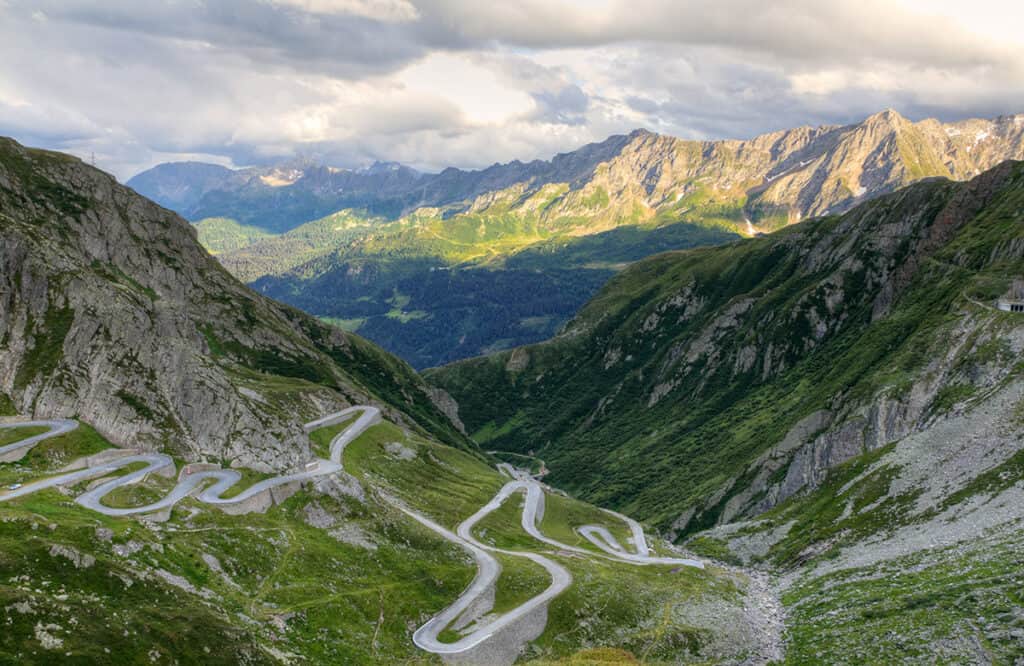
Tips for Driving in the Mountains
Driving in the mountains can be scary- especially in a campervan or motorhome. Here are some tips to help.
NOTE: On small roads, ascending traffic usually has priority. So if you are driving downhill, be prepared to give way to vehicles coming up towards you. The exception to this is the postbus, which has priority either way.
- Estimated driving times by navigation systems and route planners can be very optimistic. Take your time and allow extra.
- Try not to drive in the mountains after dusk- it’s even scarier at night!
- Many mountain passes close for winter. There are no fixed dates as it depends on snowfall Some higher passes can be closed until June.
- Some passes are too narrow or steep for trailers, caravans or motorhomes. Read the map and also any warning signs carefully.
- Make sure your vehicle is prepared and you have done your pre-trip checks.
- Make sure that you have adequate fuel- there are no fuel stations on mountain roads. Top up whenever you find a garage, even if it’s only half empty.
Tips for braking/ engine speed in the mountains
- When descending, use a low gear and high engine speed. The engine with help with deceleration, which in turns saves your brakes.
- Maintain as low a speed as possible.
- You will have longer braking time than you might be used to- allow extra room
- Assuming a 5-gear vehicle, it is usually sufficient to use gear 1 to 3 only.
- Your brakes will get HOT as you descend as you are using them almost-constantly. Try not to ‘ride’ the brake and give them a rest whenever possible. If possible, stop about halfway down in a safe place for 10-15 minutes and let them cool.
- Keep a high engine speed and don’t change gears so quickly (stay around 3000 – 4000 revs)
- If you gain speed, select a lower gear or gently use the brakes (not continuously.)
- Do not drive in neutral.
- If you have an automatic motorhome or camper, switch to manual mode for better control over the gears.
- Hairpin bends are tough, especially if you don’t have someone who can look for oncoming traffic. If in doubt, sound your horn before a blind bend and listen for a response.
- Don’t underestimate the stupidity of other drivers, especially those who don’t understand turning circles for large vehicles. They will try to cut inside you as you start to turn around a blind bend…
- Beware of cyclists on a descent- those people are crazy!!
- If you are slow and can safely pull over, let other cars past and indicate right to show your intentions.
What to do if your brakes fail
On our first trip to the Swiss Alps, our brakes failed. It was, without doubt, the most terrified I’ve ever been on a road trip. Ever.
You can read the entire story here, including the cause, but here are some tips in case that ever happens to you *touch wood it never does!*
- Try to decelerate as quickly as possible. Select a low gear and apply hard pressure to the brake pedal.
- Only pull the handbrake if the road is not slippery (if the surface is wet, you could skid)
- Do NOT put the vehicle into neutral
- If you can find an emergency road, a run-off road, a field (check there’s no ditch) or anywhere safe to run off into, use that.
- Worst case, drive the vehicle sideways into the wall- scraping down the side. It will destroy your vehicle, but you should be slowed to a stop.
Driving in Switzerland- what to do in the event of a road traffic accident
You should have a European Claim Form provided by your insurer before you leave. In the event of an accident, all parties complete and sign the form at the scene and then send a copy to your insurer for assessment.
What to do at the scene:
- Stop your vehicle immediately but safely- out of the flow of traffic if possible.
- If a vehicle is blocking the road, use hazard lights and put the red warning triangle 30 metres from the scene to warn approaching traffic
- Exchange your details with the other involved parties. Be sure to get:
- Name and address of all the people involved in the accident
- Vehicle registration numbers of all parties
- Insurance company details of all parties
- Take photos of damage using a camera, GoPro or phone
For more details, read our step-by-step guide on dealing with a road traffic accident in Europe
“Rettungsgasse”
Switzerland, German and Austrian law requires drivers to create a Rettungsgasse (emergency vehicle lane) whenever there is an accident or emergency on the Autobahn. This is so ambulances, police or fire can get to the casualties.
NOTE: This is only for when you are pulling to a stop or very very slow moving.
If there are two lanes (going in the same direction), drivers must move their vehicles to the far right or far left (whichever is closest to you), creating a middle open lane for emergency vehicles. If there are more than two lanes then drivers in the right-side lanes stay far right, while drivers in the middle or left lane(s) go on the far left. The emergency parking lane (hard shoulder) should not be blocked unless signage or a police officer indicates otherwise.
You should keep all doors closed and avoid standing outside the vehicle so you don’t get in the way of any emergency service vehicles.
Wildlife accidents
It is a legal requirement to report any accidents involving wildlife to the Police. Around 80% of the country is designated as ‘rural’, so it is very likely that you may encounter wildlife on your journey. On small roads, be prepared to slow down or stop for cows, goats and sheep.
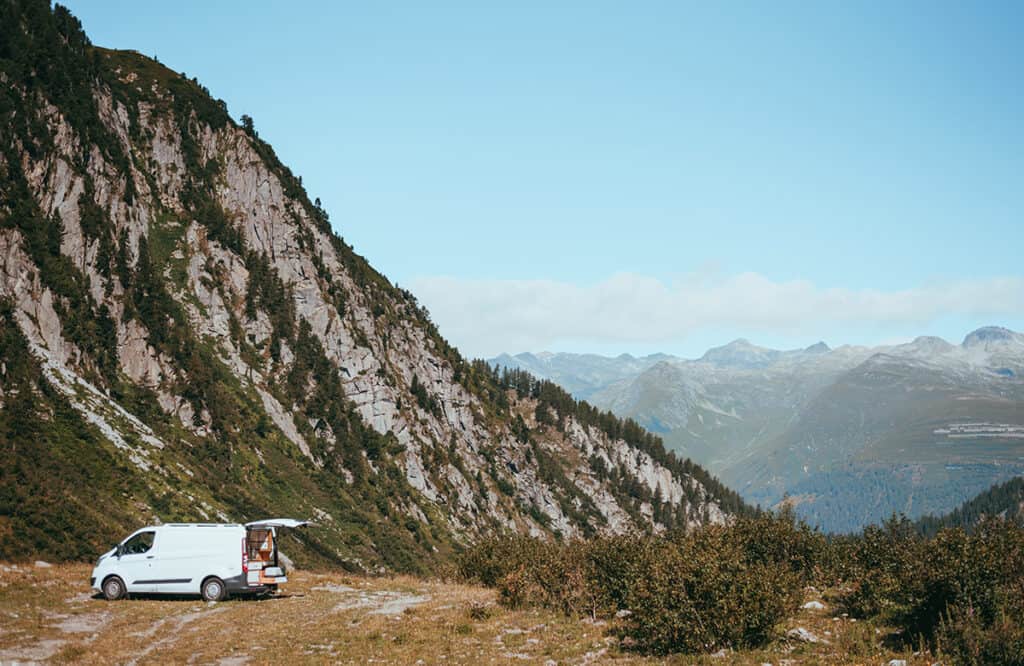
Petrol/ Diesel
There are plenty of fuel stations across Switzerland. As with everywhere, you’ll find the prices slightly higher on the motorways.
Petrol is Bleifrei (95 / 98), Sans plomb (95 / 98), Senza piombo (95 / 98) – Green handles on pump
Diesel is called… diesel. Black or yellow handles on pump
Some places are 24h pay at the pump, but may require you to go into the shop and pay the cashier either in advance or after you’ve filled up- there will be a sign to tell you what to do. (Leave your car in front of the pump and make a note of the pump number.)
You can pay using cash or a credit card. Many places do NOT take American Express. You can usually use your UK cards without a problem.
Getting LPG in Switzerland
LPG (GPL) can be found at selected petrol stations and at autogas stations. If buying from a petrol station, you may need to wait for an attendant to turn the system on for you.
You can find places which sell LPG using MyLPG.eu
Remember, if you don’t have refillable gas bottles, you will be unable to buy a gas bottle which fits straight onto a UK system- you need a new pigtail.
Switzerland uses the ACME connector and the Dish connector.
LEARN MORE: Learn how we find LPG in Europe for our motorhome
More useful things to know when campervanning in Switzerland
Some more tips to help you enjoy your time touring in Switzerland.
Emergency Numbers: 112 will get you everything
Language– The 4 official languages are French, German, Italian and Romansh. Different regions have different ‘main’ languages. English is widely spoken and understood.
Currency– Swiss Francs (CHF)- NOT Euros
Cards– most major credit and debit cards are accepted. American Express is only taken in large stores (not at tolls and often not at fuel stations)
Timezone– GMT+1 (or one hour ahead in BST)
Mobile Phone and Internet – It’s usually possible to use your UK phone and data in Switzerland, but do check with your provider.
Tipping- Tipping is not expected but appreciated. 5% – 10% in restaurants is standard if you are happy with the service.
Shops– Food prices are pretty expensive. Many shops close at 6.30pm and do not open on Sundays at all. Bigger supermarkets and garages may be open.
Some of the local dishes include:
- Cheese fondue (served in a pot with bread)
- Raclette (melted cheese)
- Rösti (fried potato cake)
- älplermargronen (the original mac‘n cheese!)
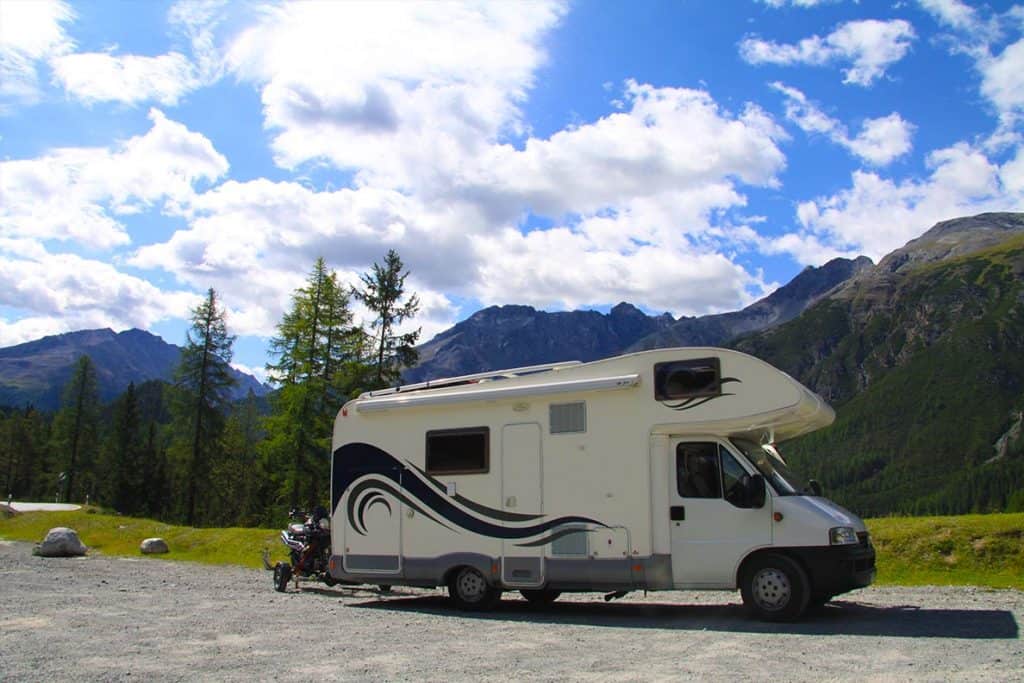
Campervanning in Switzerland- security
Switzerland has a low crime rate, but vehicle break-ins do happen, as do petty theft and pickpocketing.
We highly recommend paying extra attention to your motorhome security when travelling in Switzerland. You might even wish to fit an extra camper habitation door lock and never leave your vehicle unattended in an unsecure area.
READ MORE: Essential tips for protecting your van at home and on the road
Touring Switzerland with a dog
Switzerland is pretty dog friendly. In restaurants, bars and cafes, you can usually assume your dog is welcome unless there’s a sign (or employee) telling you otherwise.
Read more: changes affecting travelling to Europe with a dog after BREXIT
They are not allowed into public places like museums.
Dogs are welcome on trains and most public transport. Inside a dog carrier, they’re free of charge. On a leash will cost you a half-fare.
Don’t forget how hot it gets in summer and to make sure your dog is comfortable. Do NOT leave them in your motorhome or camper on a sunny day- vans heat up just like cars do. Here are some tips to keep your dog cool on a road trip.
To return to the UK you’ll need a vet on the continent to administer a worming treatment and then allow between 24 hours and 5 days before re-entering the UK.
Using a drone in Switzerland
You are allowed to take and fly your drone in Switzerland, but they are VERY hot on privacy laws and recording people without their permission- especially if you then upload the footage to Youtube or something.
READ MORE: What’s the best travel drone (and how to choose)
Drones and similar remote-controlled flying devices must be kept at least a minimum 100m from people, vehicles and buildings that are not connected with the drone operator. Flying must happen in daylight only, below 150m and never fly closer than 5km to airports. The drone must always remain within the sight of the operator.
Please check for local regulations and military or other special restricted areas where all the aforementioned activities are forbidden by law. Here are current rules.
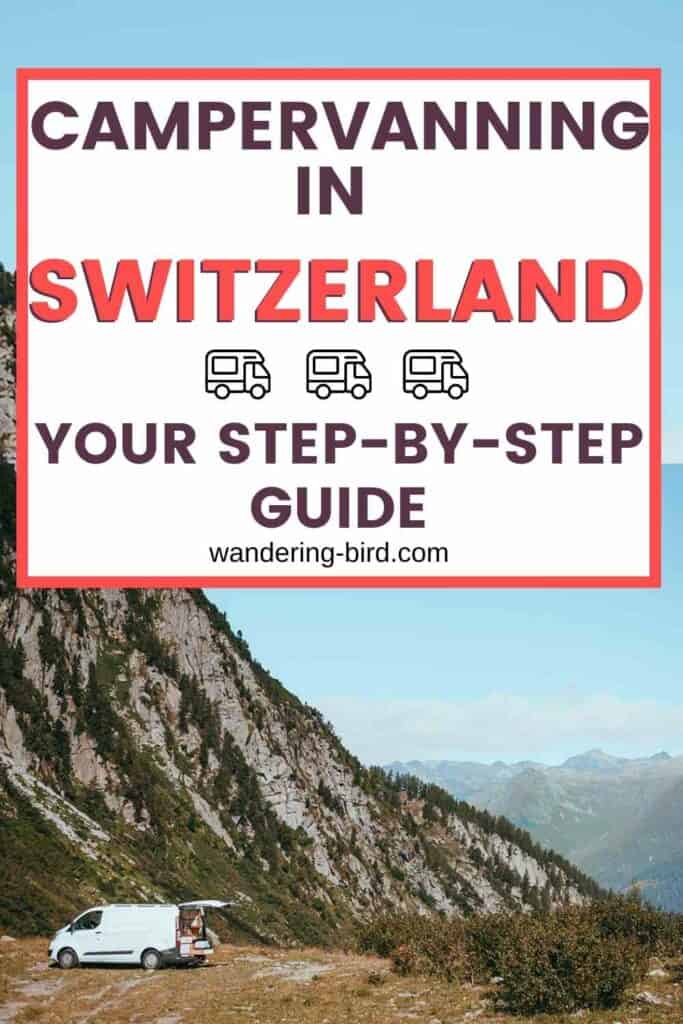
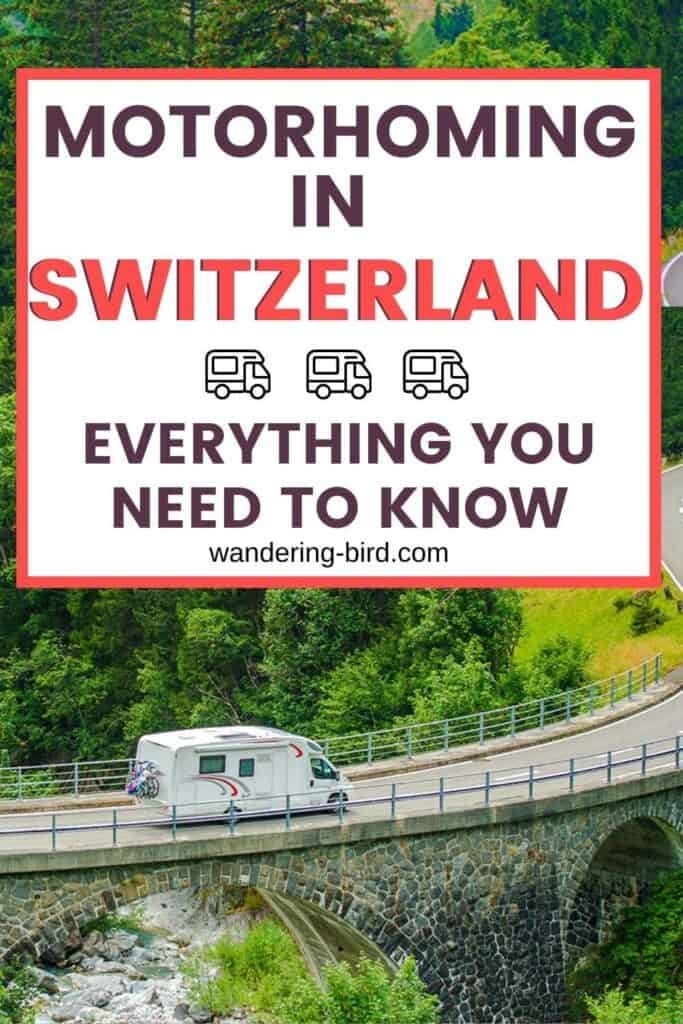

Kat never planned to buy a motorhome. She also never planned to quit her job as an air traffic controller, go touring around Europe in said motorhome, start one of the UK’s largest motorhome travel websites… or get a cocker spaniel.
Find out how she went from stuck in the rat race to being a digital nomad and inspiring thousands of people to have their own epic adventures here.
If you’d like to connect with Kat, send her an email or follow her adventures on social media.
Last update on 2024-04-18 / Affiliate links / Images from Amazon Product Advertising API
